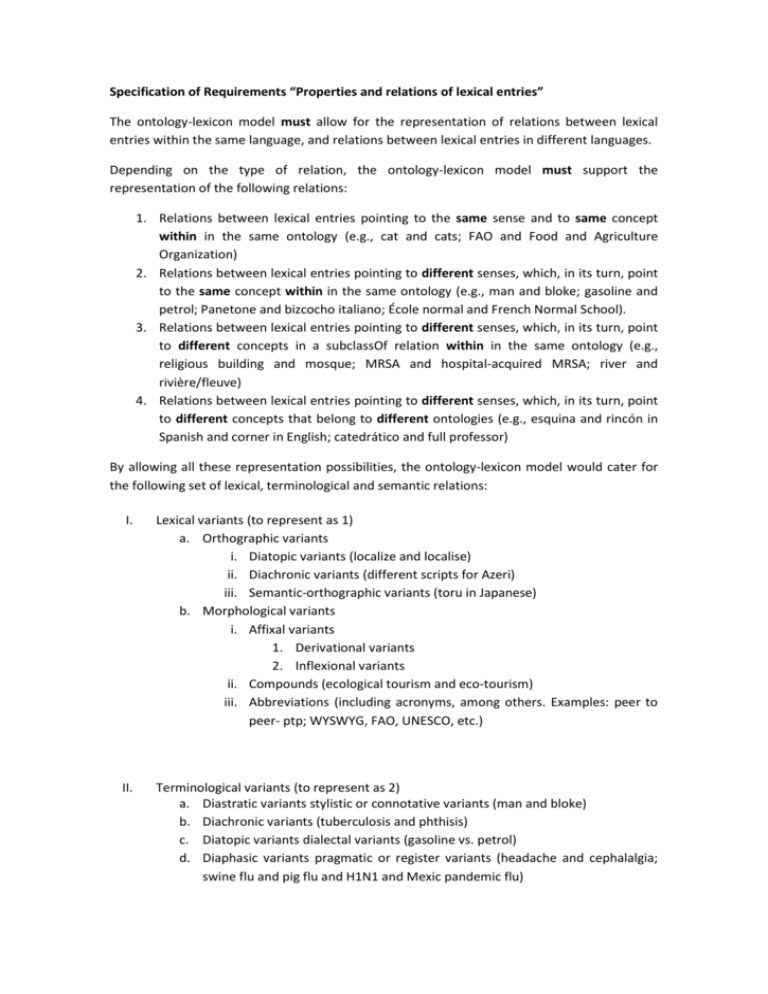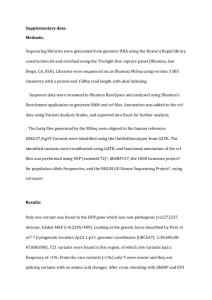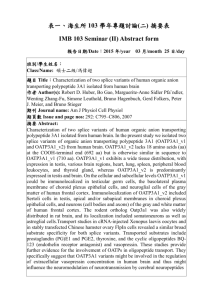SummaryRequirements_v1
advertisement

Specification of Requirements “Properties and relations of lexical entries” The ontology-lexicon model must allow for the representation of relations between lexical entries within the same language, and relations between lexical entries in different languages. Depending on the type of relation, the ontology-lexicon model must support the representation of the following relations: 1. Relations between lexical entries pointing to the same sense and to same concept within in the same ontology (e.g., cat and cats; FAO and Food and Agriculture Organization) 2. Relations between lexical entries pointing to different senses, which, in its turn, point to the same concept within in the same ontology (e.g., man and bloke; gasoline and petrol; Panetone and bizcocho italiano; École normal and French Normal School). 3. Relations between lexical entries pointing to different senses, which, in its turn, point to different concepts in a subclassOf relation within in the same ontology (e.g., religious building and mosque; MRSA and hospital-acquired MRSA; river and rivière/fleuve) 4. Relations between lexical entries pointing to different senses, which, in its turn, point to different concepts that belong to different ontologies (e.g., esquina and rincón in Spanish and corner in English; catedrático and full professor) By allowing all these representation possibilities, the ontology-lexicon model would cater for the following set of lexical, terminological and semantic relations: I. Lexical variants (to represent as 1) a. Orthographic variants i. Diatopic variants (localize and localise) ii. Diachronic variants (different scripts for Azeri) iii. Semantic-orthographic variants (toru in Japanese) b. Morphological variants i. Affixal variants 1. Derivational variants 2. Inflexional variants ii. Compounds (ecological tourism and eco-tourism) iii. Abbreviations (including acronyms, among others. Examples: peer to peer- ptp; WYSWYG, FAO, UNESCO, etc.) II. Terminological variants (to represent as 2) a. Diastratic variants stylistic or connotative variants (man and bloke) b. Diachronic variants (tuberculosis and phthisis) c. Diatopic variants dialectal variants (gasoline vs. petrol) d. Diaphasic variants pragmatic or register variants (headache and cephalalgia; swine flu and pig flu and H1N1 and Mexic pandemic flu) e. Rephrasing variants (immigration law and law for regulating and controlling immigration) f. Literal translations (École normal and Normal School; Presidente del Gobierno and Spanish Prime Ministe) g. Descriptive translations (Panetone and bizcocho italiano que se consume en Nochevieja) III. Semantic variants (to represent as 3 and 4) a. Hypernym/Hyponym (antonymy) b. Cross-lingual near equivalents (broad/narrow equivalents)




